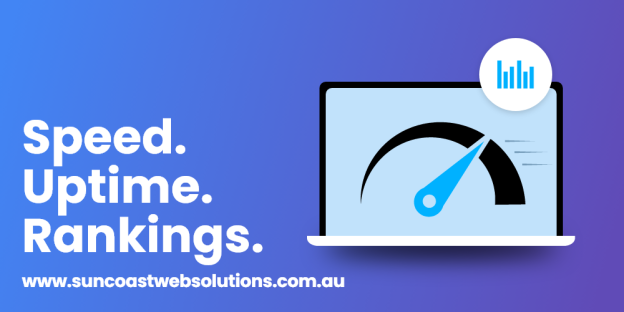SEO Audit Checklist 2025: Your Fast-Track Guide

 23rd May, 2025
23rd May, 2025
Quick SEO audit checklist 2025: Run a full website audit in under an hour and fix what actually matters.
Table of Contents:
- Why Most Sites Fail Early
- Step 1: Are You Indexed?
- Step 2: Crawl It Like Google
- Step 3: Polish Your Snippets
- Step 4: Survive Mobile Checks
- Step 5: Speed Up or Fall Behind
- Step 6: Fix Thin, Bloated Pages
- Step 7: Clean Up the Backend
- Step 8: Check Your Link Street Cred
- Step 9: Let Data Tell the Truth
- Step 10: Track. Measure. Win.
- Final Words + Free Strategy Call
Why Most Sites Fail Before They Even Begin

Let’s be honest, most websites look decent on the surface. But under the hood? They’re a mess. Broken links, slow loading times, outdated content, or worse, no visibility at all.
That’s why this SEO audit checklist 2025 exists. Not for the tech elite. Not for marketing teams with endless budgets. But for real people who want their websites to work, without wasting days or hiring overpriced experts.
And yes, you really can do it in under an hour. Here’s how.
Most business owners think SEO audits are some complex, tech-heavy ordeal. They imagine being buried under spreadsheets, deciphering code, or paying consultants a small fortune just to tell them their site’s “a bit slow.” That belief stops a lot of people from doing it at all.
But the truth is, SEO doesn’t have to be overwhelming. In fact, you can absolutely do a proper check-up on your website in under an hour. Instead of getting lost in data, you just need a clear process and the willingness to follow through.
That’s where this SEO audit checklist for 2025 comes in. It’s built for busy people who need results without the fluff. Whether you run a small business, manage a growing company, or you’re just trying to improve your online presence, this quick SEO audit guide will show you how to do an SEO audit with clarity and confidence.
By the end of this post, you’ll have a practical, down-to-earth system that helps you:
- Spot the weak spots in your website
- Fix the stuff that really matters
- Make search engines (and people) love your site
- Build a stronger foundation for future SEO efforts
- Save time by avoiding wasted effort on the wrong fixes
You’ll feel more in control of your online visibility. More empowered to make changes that actually move the needle. And more confident knowing you’re no longer flying blind.
So grab a notepad or open your notes app. Let’s dive in and knock this out together using this quick SEO audit guide. By the time you’re done, you’ll know exactly where your site stands and what needs attention.
Step 1: Indexing Check for Your SEO Audit Checklist 2025
Before anything else, make sure Google can find your site. This is the foundation of every SEO audit checklist 2025 and the starting point of understanding your site’s visibility.
Open a browser and type:
Unset
site:yourwebsite.com
If pages show up, Google has indexed them. If nothing appears, you’ve got a serious problem. This tells you whether you’re even showing up in search results.
Here’s what to watch for:
- Do your main pages appear first, like your homepage or service pages?
- Are outdated or irrelevant pages also showing up?
- Are there weird or random pages you didn’t even know existed?
- Are there duplicate versions of URLs that shouldn’t be indexed?
If you spot issues, it’s a sign to dig deeper. Something might be blocking Google from seeing your most valuable content, and that’s a missed opportunity.
Quick win: Make sure your sitemap is submitted to Google Search Console and that it reflects your actual site structure. This is a vital part of the website SEO audit process and ensures that Google has a clear roadmap to follow.
Pro Tip: Use the “Coverage” section in Google Search Console to review which pages are indexed, which are excluded, and why.
Step 2: Use Crawl Tools in Your SEO Audit Checklist 2025
You can’t fix what you don’t see. That’s where crawl tools help. A key part of any SEO audit checklist 2025 is identifying what’s broken under the surface.
Free tools like Screaming Frog or Ahrefs Webmaster Tools simulate how a search engine explores your site. They provide detailed reports on what search engines see and what might be holding your site back.
Once you start the crawl, let it finish running. Then, look through the results. Don’t be overwhelmed—focus on a few key issues.
Here are key issues to check:
- 404 errors (broken links that lead nowhere)
- Redirect loops or chains (one page jumping to another endlessly)
- Duplicate title tags or meta descriptions
- Missing H1 tags
- Pages blocked by robots.txt that shouldn’t be
- Overly long or missing meta tags
Fixing these issues boosts crawlability, which is essential for better rankings. If search engines can’t efficiently scan your website, they won’t know which pages matter.
Keep a checklist of what you fix so you can track improvements over time.
Step 3: Audit Titles and Meta Descriptions for SEO
This step is simple, but it’s where many businesses miss out on easy wins. It’s also a big part of the website SEO audit process that directly impacts click-through rates.
Your page titles and meta descriptions are what users see in Google. They decide whether someone clicks or scrolls past. Weak titles lead to low click-through rates, even if you rank well.
To fix this, check the following:
- Every page should have a unique title tag
- Keep title tags under 60 characters
- Place your most important keyword near the beginning
- Meta descriptions should be under 160 characters and compelling enough to earn a click
- Avoid keyword stuffing, but keep things clear
and direct Example:
- Weak: “Home” or “Welcome to Our Website”
- Strong: “Sunshine Coast Plumber | Emergency & Same-Day Service”
Update your metadata to reflect the actual content of the page and match the intent behind the search. This is one of the fastest ways to get more value from a quick SEO audit guide.
Also: Make sure each meta description includes a subtle call to action and matches the searcher’s intent.
Step 4: Mobile Usability in Your SEO Audit Checklist
Most of your traffic probably comes from mobile devices. And Google now ranks sites based on mobile usability first. If your site doesn’t work well on phones and tablets, you’ll lose traffic and trust.
To test this, head over to Google’s Mobile-Friendly Test and run your site. Pay attention to these factors:
- Is the text easy to read without pinching or zooming?
- Are all buttons and menus working properly?
- Is the layout clean and responsive on different devices?
- Are pop-ups or overlays blocking content?
If you fail this test, visitors will leave fast and rankings will drop. For a professional upgrade, check our web design services. Don’t skip this mobile review, it’s essential in your SEO audit checklist 2025.
Quick Tip: Test more than just your homepage. Run the test on a few key pages to catch different layout issues.
Step 5: Page Speed Audit for SEO Performance
Site speed matters. A lot. It’s one of those silent factors that can make or break your SEO efforts.
A slow site hurts both rankings and user experience. No one wants to wait 10 seconds for a page to load. That’s why this is a core item in any modern SEO audit checklist 2025.
Use PageSpeed Insights and focus on these metrics:
- Largest Contentful Paint (LCP) under 2.5 seconds
- First Input Delay (FID) under 100 milliseconds
- Cumulative Layout Shift (CLS)
under 0.1 Google gives useful suggestions:
- Compress large images
- Eliminate render-blocking resources
- Use modern image formats (WebP)
- Reduce unused CSS or JavaScript
Speed is non-negotiable. When people land on your site, they expect it to be fast. This step alone can change how your site performs.
Remember: Faster websites don’t just rank better, they convert better too.
Step 6: Content Review in the SEO Audit Process
Now let’s look at your actual content. This is the human part of the website SEO audit process. Content is still king, but only if it’s clear, helpful, and relevant.
Choose a few important pages—your homepage, a main service page, and a blog post. Read them as if you were visiting the site for the first time.
Ask yourself:
- Does this answer the question the reader came with?
- Is the information clear and easy to scan?
- Are the headings structured logically (H1 for the main title, H2s for sections)?
- Do I use bullet points to break things up?
- Is the tone approachable and written for a human, not a search engine?
You also want to naturally include your keywords without stuffing them. In addition, your content should sound like a real person talking, not a robot trying to rank.
This section of the quick SEO audit guide helps you fix content that’s too vague, too dense, or just not helpful.
Extra step: Look for opportunities to link to other pages on your site and include relevant internal anchor text.
“You can’t manage what you don’t measure. But even the best tools mean nothing if you never use them.”
Step 7: Fix Technical SEO Issues in Your Website SEO Audit Process
Now that you’ve reviewed content and structure, it’s time to tackle the back end. Technical SEO is all about making your website function well behind the scenes.
Here’s what to look at:
- Use proper HTTP status codes (301 for redirects, 200 for successful loads)
- Clean up duplicate content that might confuse search engines
- Make sure your XML sitemap is current and properly formatted
- Ensure structured data is implemented where relevant (FAQ, Reviews, Products)
Use Google Search Console’s “Coverage” and “Enhancements” tabs to find issues like blocked pages or mobile usability warnings. You should also test your robots.txt file and ensure it isn’t accidentally hiding key pages from search engines.
This stage may not be visible to users, but it’s critical. Think of it as laying the groundwork that lets all your other SEO work pay off.
Step 8: Audit and Improve Your Backlink Profile
Links from other websites still matter in 2025, probably more than ever. But not all backlinks are created equal. Some boost your credibility. Others can hurt it.
To get started:
- Use tools like Ahrefs, SEMrush, or Moz to see who’s linking to you
- Look at the total number of referring domains, not just individual links
- Watch out for spammy links from irrelevant sites
- Disavow toxic backlinks using Google’s disavow tool (only if necessary)
Also, look for opportunities to build new links:
- Ask suppliers or partners to link to you
- Create helpful resources others want to cite
- Contribute guest posts on industry blogs
A healthy backlink profile tells search engines that your content is trusted. Make it a regular part of your SEO audit checklist 2025.
Step 9: Dive Into Analytics and Search Console Data
Once the structure is solid and the content is polished, the next step is understanding how your site performs.
In Google Analytics:
- Check which pages get the most traffic
- Find out where users are dropping off (bounce rate)
- Measure average time on site to understand engagement
In Google Search Console:
- Identify which keywords drive the most clicks
- Monitor impressions versus actual clicks
- Track any coverage issues or indexing errors
This data provides real-world insight into how users are interacting with your site and what search engines think of it. It’s not just helpful, it’s essential.
Set up dashboards or use automated reports so you’re always informed and never flying blind.
Step 10: Track Your Keyword Rankings Over Time
If you want to improve, you need to measure. Keyword tracking isn’t about obsessing over daily changes, it’s about spotting long-term trends.
Choose 10–20 important keywords. These should include:
- Branded terms
- Service-based queries
- Local intent keywords (if relevant)
Use tools like:
- Ubersuggest
- SE Ranking
- SERPWatcher (Mangools)
Track your progress weekly or monthly. Watch for sudden drops that might indicate a problem. Equally, take note of steady improvements so you know what’s working.
This step helps tie your SEO efforts to real, measurable outcomes. It closes the loop on your quick SEO audit guide.
Final Thoughts: Complete Your SEO Audit Checklist 2025
You made it. You now have everything you need to run a complete website SEO audit process. Here’s a quick recap:
- Check if your pages are indexed properly
- Run a full crawl to spot issues
- Polish up your titles and descriptions
- Test mobile-friendliness and fix usability
- Improve page speed and loading performance
- Strengthen on-page content
- Address technical SEO elements
- Review and build a strong backlink profile
- Analyze traffic and search data
- Track your keywords regularly
If you’re still unsure how to do SEO audit work consistently, use this checklist once a quarter. Think of it like a health check-up for your website.
Need help? Want a second pair of eyes on your audit results?
We’d love to take a look. Book a free strategy call with our team. No pressure—just possibilities.
we are your one-stop internet marketing solution on the sunshine coast!

 07 5479 3888
07 5479 3888









